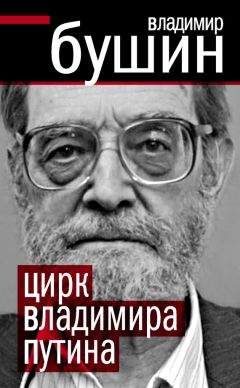Steven Dubner - Freakonomics
So while a strong 1990s economy might have seemed, on the surface, a likely explanation for the drop in crime, it almost certainly didn’t affect criminal behavior in any significant way.
Unless, that is, “the economy” is construed in a broader sense—as a means to build and maintain hundreds of prisons. Let’s now consider another crime-drop explanation: increased reliance on prisons. It might help to start by flipping the crime question around. Instead of wondering what made crime fall, think about this: why had it risen so dramatically in the first place?
During the first half of the twentieth century, the incidence of violent crime in the United States was, for the most part, fairly steady. But in the early 1960s, it began to climb. In retrospect, it is clear that one of the major factors pushing this trend was a more lenient justice system. Conviction rates declined during the 1960s, and criminals who were convicted served shorter sentences. This trend was driven in part by an expansion in the rights of people accused of crimes—a long overdue expansion, some would argue. (Others would argue that the expansion went too far.) At the same time, politicians were growing increasingly softer on crime—“for fear of sounding racist,” as the economist Gary Becker has written,
“since African-Americans and Hispanics commit a disproportionate share of felonies.” So if you were the kind of person who might want to commit a crime, the incentives were lining up in your favor: a slimmer likelihood of being convicted and, if convicted, a shorter prison term. Because criminals respond to incentives as readily as anyone, the result was a surge in crime.
It took some time, and a great deal of political turmoil, but these incentives were eventually curtailed. Criminals who would have previously been set free—for drug-related offenses and parole revocation in particular—were instead locked up. Between 1980 and 2000, there was a fifteenfold increase in the number of people sent to prison on drug charges. Many other sentences, especially for violent crime, were lengthened. The total effect was dramatic. By 2000, more than two million people were in prison, roughly four times the number as of 1972.
Fully half of that increase took place during the 1990s.
The evidence linking increased punishment with lower crime rates is very strong. Harsh prison terms have been shown to act as both deterrent (for the would-be criminal on the street) and prophylactic (for the would-be criminal who is already locked up). Logical as this may sound, some criminologists have fought the logic. A 1977 academic study called “On Behalf of a Moratorium on Prison Construction” noted that crime rates tend to be high when imprisonment rates are high, and concluded that crime would fall if imprisonment rates could only be lowered. (Fortunately, jailers did not suddenly turn loose their wards and sit back waiting for crime to fall. As the political scientist John J. DiIulio Jr.
later commented, “Apparently, it takes a Ph.D. in criminology to doubt that keeping dangerous criminals incarcerated cuts crime.”) The “Moratorium”
argument rests on a fundamental confusion of correlation and causality.
Consider a parallel argument. The mayor of a city sees that his citizens celebrate wildly when their team wins the World Series. He is intrigued by this correlation but, like the “Moratorium” author, fails to see the direction in which the correlation runs. So the following year, the mayor decrees that his citizens start celebrating the World Series before the first pitch is thrown—an act that, in his confused mind, will ensure a victory.
There are certainly plenty of reasons to dislike the huge surge in the prison population. Not everyone is pleased that such a significant fraction of Americans, especially black Americans, live behind bars. Nor does prison even begin to address the root causes of crime, which are diverse and complex. Lastly, prison is hardly a cheap solution: it costs about $25,000 a year to keep someone incarcerated. But if the goal here is to explain the drop in crime in the 1990s, imprisonment is certainly one of the key answers. It accounts for roughly one-third of the drop in crime.
Another crime-drop explanation is often cited in tandem with imprisonment: the increased use of capital punishment. The number of executions in the United States quadrupled between the 1980s and the 1990s, leading many people to conclude—in the context of a debate that has been going on for decades—that capital punishment helped drive down crime. Lost in the debate, however, are two important facts.
First, given the rarity with which executions are carried out in this country and the long delays in doing so, no reasonable criminal should be deterred by the threat of execution. Even though capital punishment quadrupled within a decade, there were still only 478 executions in the entire United States during the 1990s. Any parent who has ever said to a recalcitrant child, “Okay, I’m going to count to ten and this time I’m really going to punish you,” knows the difference between deterrent and empty threat. New York State, for instance, has not as of this writing executed a single criminal since reinstituting its death penalty in 1995. Even among prisoners on death row, the annual execution rate is only 2
percent—compared with the 7 percent annual chance of dying faced by a member of the Black Gangster Disciple Nation crack gang. If life on death row is safer than life on the streets, it’s hard to believe that the fear of execution is a driving force in a criminal’s calculus. Like the $3 fine for late arriving parents at the Israeli day-care centers, the negative incentive of capital punishment simply isn’t serious enough for a criminal to change his behavior.
The second flaw in the capital punishment argument is even more obvious.
Assume for a moment that the death penalty is a deterrent. How much crime does it actually deter? The economist Isaac Ehrlich, in an oft-cited 1975 paper, put forth an estimate that is generally considered optimistic: executing 1 criminal translates into 7 fewer homicides that the criminal might have committed. Now do the math. In 1991, there were 14 executions in the United States; in 2001, there were 66. According to Ehrlich’s calculation, those 52 additional executions would have accounted for 364 fewer homicides in 2001—not a small drop, to be sure, but less than 4 percent of the actual decrease in homicides that year. So even in a death penalty advocate’s best-case scenario, capital punishment could explain only one twenty-fifth of the drop in homicides in the 1990s. And because the death penalty is rarely given for crimes other than homicide, its deterrent effect cannot account for a speck of decline in other violent crimes.
It is extremely unlikely, therefore, that the death penalty, as currently practiced in the United States, exerts any real influence on crime rates. Even many of its onetime supporters have come to this conclusion. “I feel morally and intellectually obligated simply to concede that the death penalty experiment has failed,” said U.S. Supreme Court Justice Harry A. Blackmun in 1994, nearly twenty years after he had voted for its reinstatement. “I no longer shall tinker with the machinery of death.”
So it wasn’t capital punishment that drove crime down, nor was it the booming economy. But higher rates of imprisonment did have a lot to do with it. All those criminals didn’t march into jail by themselves, of course. Someone had to investigate the crime, catch the bad guy, and put together the case that would get him convicted. Which naturally leads to a related pair of crime-drop explanations:
• Innovative policing strategies
• Increased number of police
Let’s address the second one first. The number of police officers per capita in the United States rose about 14 percent during the 1990s. Does merely increasing the number of police, however, reduce crime? The answer would seem obvious—
yes—but proving that answer isn’t so easy. That’s because when crime is rising, people clamor for protection, and invariably more money is found for cops. So if you just look at raw correlations between police and crime, you will find that when there are more police, there tends to be more crime. That doesn’t mean, of course, that the police are causing the crime, just as it doesn’t mean, as some criminologists have argued, that crime will fall if criminals are released from prison.
To show causality, we need a scenario in which more police are hired for reasons completely unrelated to rising crime. If, for instance, police were randomly sprinkled in some cities and not in others, we could look to see whether crime declines in the cities where the police happen to land.
As it turns out, that exact scenario is often created by vote-hungry politicians. In the months leading up to Election Day, incumbent mayors routinely try to lock up the law-and-order vote by hiring more police—even when the crime rate is standing still. So by comparing the crime rate in one set of cities that have recently had an election (and which therefore hired extra police) with another set of cities that had no election (and therefore no extra police), it’s possible to tease out the effect of the extra police on crime. The answer: yes indeed, additional police substantially lower the crime rate.
Again, it may help to look backward and see why crime had risen so much in the first place. From 1960 to 1985, the number of police officers fell more than 50
percent relative to the number of crimes. In some cases, hiring additional police was considered a violation of the era’s liberal aesthetic; in others, it was simply considered too expensive. This 50 percent decline in police translated into a roughly equal decline in the probability that a given criminal would be caught.
Coupled with the above-cited leniency in the other half of the criminal justice system, the courtrooms, this decrease in policing created a strong positive incentive for criminals.
By the 1990s, philosophies—and necessities—had changed. The policing trend was put in reverse, with wide-scale hiring in cities across the country. Not only did all those police act as a deterrent, but they also provided the manpower to imprison criminals who might have otherwise gone uncaught. The hiring of additional police accounted for roughly 10 percent of the 1990s crime drop.
But it wasn’t only the number of police that changed in the 1990s; consider the most commonly cited crime-drop explanation of all: innovative policing strategies.
There was perhaps no more attractive theory than the belief that smart policing stops crime. It offered a set of bona fide heroes rather than simply a dearth of villains. This theory rapidly became an article of faith because it appealed to the factors that, according to John Kenneth Galbraith, most contribute to the formation of conventional wisdom: the ease with which an idea may be understood and the degree to which it affects our personal well-being.
The story played out most dramatically in New York City, where newly elected mayor Rudolph Giuliani and his handpicked police commissioner, William Bratton, vowed to fix the city’s desperate crime situation. Bratton took a novel approach to policing. He ushered the NYPD into what one senior police official later called “our Athenian period,” in which new ideas were given weight over calcified practices. Instead of coddling his precinct commanders, Bratton demanded accountability. Instead of relying solely on old-fashioned cop know-how, he introduced technological solutions like CompStat, a computerized method of addressing crime hot spots.
The most compelling new idea that Bratton brought to life stemmed from the broken window theory, which was conceived by the criminologists James Q.
Wilson and George Kelling. The broken window theory argues that minor nuisances, if left unchecked, turn into major nuisances: that is, if someone breaks a window and sees it isn’t fixed immediately, he gets the signal that it’s all right to break the rest of the windows and maybe set the building afire too.
So with murder raging all around, Bill Bratton’s cops began to police the sort of deeds that used to go unpoliced: jumping a subway turnstile, panhandling too aggressively, urinating in the streets, swabbing a filthy squeegee across a car’s windshield unless the driver made an appropriate “donation.”
Most New Yorkers loved this crackdown on its own merit. But they particularly loved the idea, as stoutly preached by Bratton and Giuliani, that choking off these small crimes was like choking off the criminal element’s oxygen supply.
Today’s turnstile jumper might easily be wanted for yesterday’s murder. That junkie peeing in an alley might have been on his way to a robbery.
As violent crime began to fall dramatically, New Yorkers were more than happy to heap laurels on their operatic, Brooklyn-bred mayor and his hatchet-faced police chief with the big Boston accent. But the two strong-willed men weren’t very good at sharing the glory. Soon after the city’s crime turnaround landed Bratton—and not Giuliani—on the cover of Time, Bratton was pushed to resign.
He had been police commissioner for just twenty-seven months.
New York City was a clear innovator in police strategies during the 1990s crime drop, and it also enjoyed the greatest decline in crime of any large American city.
Homicide rates fell from 30.7 per 100,000 people in 1990 to 8.4 per 100,000 people in 2000, a change of 73.6 percent. But a careful analysis of the facts shows that the innovative policing strategies probably had little effect on this huge decline.
First, the drop in crime in New York began in 1990. By the end of 1993, the rate of property crime and violent crime, including homicides, had already fallen nearly 20 percent. Rudolph Giuliani, however, did not become mayor—and install Bratton—until early 1994. Crime was well on its way down before either man arrived. And it would continue to fall long after Bratton was bumped from office.
Second, the new police strategies were accompanied by a much more significant change within the police force: a hiring binge. Between 1991 and 2001, the NYPD
grew by 45 percent, more than three times the national average. As argued above, an increase in the number of police, regardless of new strategies, has been proven to reduce crime. By a conservative calculation, this huge expansion of New York’s police force would be expected to reduce crime in New York by 18
percent relative to the national average. If you subtract that 18 percent from New York’s homicide reduction, thereby discounting the effect of the police-hiring surge, New York no longer leads the nation with its 73.6 percent drop; it goes straight to the middle of the pack. Many of those new police were in fact hired by David Dinkins, the mayor whom Giuliani defeated. Dinkins had been desperate to secure the law-and-order vote, having known all along that his opponent would be Giuliani, a former federal prosecutor. (The two men had run against each other four years earlier as well.) So those who wish to credit Giuliani with the crime drop may still do so, for it was his own law-and-order reputation that made Dinkins hire all those police. In the end, of course, the police increase helped every-one—but it helped Giuliani a lot more than Dinkins.



